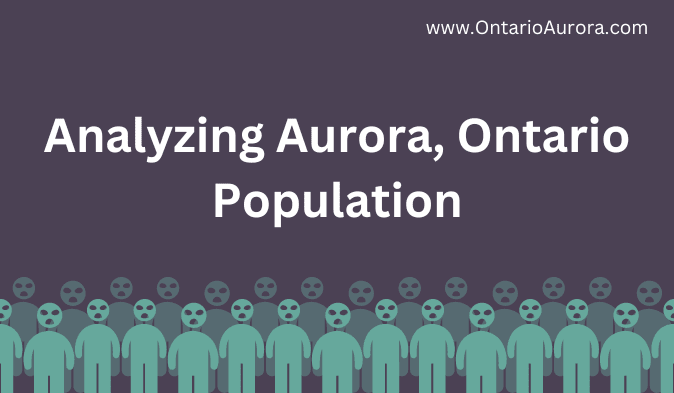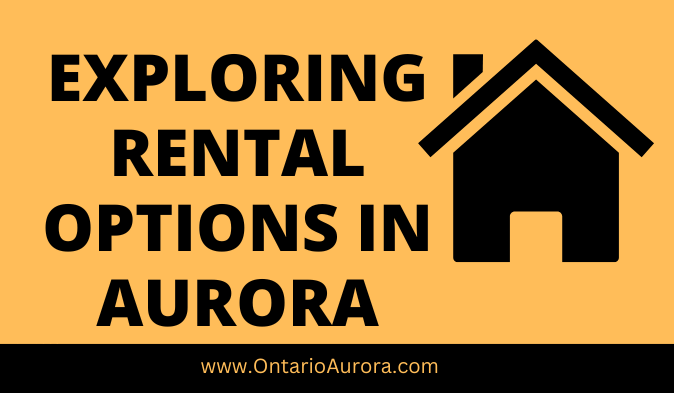
The town of Aurora has 62,057 people, and it is growing quickly. It only takes 30 minutes to drive from Aurora to the City of Toronto. Aurora is in the Greater Toronto Area (GTA), which is Ontario’s economic engine.
Aurora has a diverse economy, a highly educated and skilled workforce, great transportation links, and a technological system that is very far ahead of its time. It has both city amenities and a small-town lifestyle.
Our helpful local government provides a tax-friendly setting with low-cost serviced land and quick access to major markets.
When you choose Aurora, your business will be welcomed by a large network of links that will help you get up and running quickly.
Magna International, Bulk Barn Canada, Desjardins Insurance, and other companies in the historic downtown area make you feel like you’re in good company.
The Economic Development division of the Town works to keep the business community healthy so that it can attract new companies and meet the needs of existing ones.
The division’s main goal is to build helpful partnerships with nearby companies to help them grow, stay in business, and attract new ones.
How Population Is Calculated?
Population can be calculated using various methods depending on the context and available information.
Here are a few examples of how population is calculated in different scenarios:
- Inter-census estimation: This method is used to estimate the size of a population between two census takings. It takes into account the results of the two censuses and uses components of population change, such as migration, fertility, and mortality, to make the estimate.
- Post-census estimate: This method is typically conducted for the current year and involves the use of data based on components of population change, census results, and information that reflects change in population size, such as the number of housing units, postal or mailing addresses, registered voters, school enrollment, and users of metered water and other utilities.
- Multiplier methods: These methods use two sources of data to estimate population size. The first source is a count of unique individuals from the target population receiving a service or unique objects distributed among this population (M). The second source is a representative estimate of the proportion of the target population in receipt of the service or object (P). The count is divided by the proportion to obtain the population size estimate.
- Housing unit method: This method uses information on housing to estimate the total population size for a locale. It assumes that a change in the number of occupied housing units reflects a change in the population.
Each method has its own assumptions and data requirements, and the choice of method depends on the context and the availability of data.
How Is Population Growth Rate Calculated?
The population growth rate is typically calculated using the exponential growth formula, expressed as r = ln(pn/p0)/n.
In this formula, r represents the exponential rate of growth, ln() is the natural logarithm, pn is the end-period population, p0 is the beginning-period population, and n is the number of years in between.
This method is commonly used to determine the annual percentage growth rate of a population, considering the change in population size over a specific period.
What Are The Factors That Affect Population Growth?
The factors that affect population growth include:
- Birth rate: The number of births per 1000 people in a population. A high birth rate can lead to population growth, while a low birth rate can lead to a decrease in population.
- Life expectancy: The number of years an average person in a country is expected to live. Countries with high life expectancy tend to have slower population growth rates, while countries with low life expectancy tend to have higher population growth rates.
- Infant mortality: The average number of babies dying before they reach one year old. High infant mortality rates can lead to lower population growth rates, while low infant mortality rates can lead to higher population growth rates.
- Fertility rate: The average number of children a woman of childbearing age is expected to have in her lifetime. High fertility rates can lead to population growth, while low fertility rates can lead to a decrease in population.
- Death rate: The number of deaths per 1000 people in a population. A high death rate can lead to a decrease in population, while a low death rate can lead to population growth.
- Natural increase: The difference between the birth and death rates. If the birth rate of a country is higher than the death rate, there will be a natural increase in population.
- Migration: The movement of people (usually permanently) from one area to another. In-migration can increase population growth, while out-migration can decrease population growth.
- Overpopulation: A situation where a country’s resources are unable to meet the needs of its existing population. This can lead to anti-natal policies such as mandatory birth control to curb population growth.
- Under-population: A situation where a country’s resources are underutilized because there are insufficient people living in the area. This can lead to policies to encourage people to have more children.
- Optimum population: An ideal situation where the needs of the existing population are adequately met and there is maximization of resources’ use.
- Fertility differences: Differences in fertility rates among religious or ethnic groups within a country can lead to significant changes in the country’s religious or ethnic composition over time.
- Environmental factors: Population growth can be affected by environmental factors such as food availability, mate availability, and environmental stress factors such as pollution and natural disasters.
These factors can interact in complex ways to affect population growth, and their relative importance can vary depending on the specific context.
Aurora, Ontario Population
The population of Aurora, Ontario is 62,057 as per the 2021 Census of Population. This represents an increase of 11.9% from the 2016 Census, which recorded a population of 55,445. The population density of Aurora is 1,241.1 people per square kilometer.
Frequently Asked Questions (FAQs) about Aurora, Ontario Population:
Q1. What is the current population of Aurora, Ontario?
As of the 2021 Census of Population, the population of Aurora, Ontario is 62,057.
Q2. How does the population of Aurora compare to previous years?
The population of Aurora has seen an increase of 11.9% from the 2016 Census, which recorded a population of 55,445.
Q3. What is the population density of Aurora?
The population density of Aurora is 1,241.1 people per square kilometer.
Q4. What factors contribute to the population growth of Aurora, Ontario?
Factors contributing to the population growth of Aurora include its proximity to the Greater Toronto Area (GTA), diverse economy, highly educated workforce, technological advancements, and a welcoming business environment.
Q5. How is the population growth rate calculated for Aurora, Ontario?
The population growth rate is typically calculated using the exponential growth formula, considering the change in population size over a specific period. The formula used is: r = ln(pn/p0)/n, where r represents the exponential rate of growth, ln() is the natural logarithm, pn is the end-period population, p0 is the beginning-period population, and n is the number of years in between.
Q6. What methods are used to calculate the population in Aurora, Ontario?
Population in Aurora, Ontario can be calculated using various methods such as inter-census estimation, post-census estimation, multiplier methods, and the housing unit method. The choice of method depends on the context and availability of data.
Q7. What efforts are made by the local government to support the growing population of Aurora?
The Economic Development division of the Town works to keep the business community healthy, attract new companies, and meet the needs of existing ones. The division builds partnerships with nearby companies to support their growth and attract new businesses to Aurora.
Q7. Are there notable companies contributing to Aurora’s population growth?
Yes, notable companies such as Magna International, Bulk Barn Canada, and Desjardins Insurance, among others, are located in the historic downtown area of Aurora, contributing to its economic growth and population increase.
Q8. What amenities does Aurora offer to its residents?
Aurora offers both city amenities and a small-town lifestyle, with great transportation links, educational institutions, recreational facilities, and cultural attractions, making it an attractive place to live for its residents.
Q9. How does Aurora, Ontario contribute to the Greater Toronto Area (GTA) as Ontario’s economic engine?
Aurora’s diverse economy, highly skilled workforce, technological advancements, and strategic location within the GTA contribute to its role as a vital part of Ontario’s economic engine, fostering growth and innovation in the region.
You may also know How to find Jobs in Aurora, Ontario
RELATED POSTS
View all



